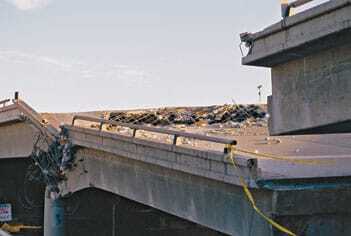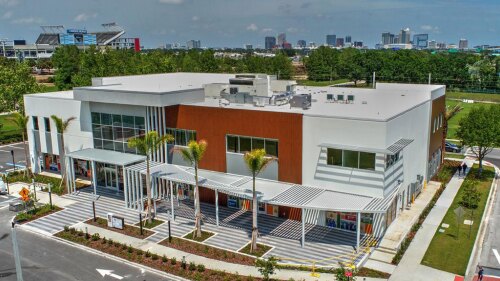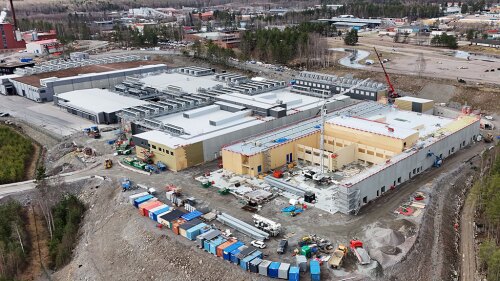Recent tsunamis, earthquakes, floods, volcano eruptions, hurricanes, and other natural disasters around the globe have created cascading effects that have triggered catastrophes. They have revealed serious deficiencies in how building designers facilitate emergency response when disaster strikes.
One disaster setting off a series of other disasters needs to be considered the norm rather than the exception when planning for events such as the offshore earthquake near Japan that led to a tsunami and a nuclear meltdown. Designers must go beyond one-dimensional plans, such as seismically retrofitting a building or designing a structure to thwart a terrorist attack. Cascading occurrences require a more integrated approach.
All disciplines focused on public safety need to be actively engaged during design to prevent disasters from developing into catastrophes—disciplines that include not just police officers and firefighters, but also property managers, security directors, tenants, code developers, city planners, community groups, and hospitals. An integrated preparedness strategy makes the unthinkable become more “thinkable.”
In the recent Japanese catastrophe, the nuclear meltdowns in Fukushima could have been prevented if all emergency backup systems had been placed within containment enclosures instead of outside them. When the backup generators needed to keep reactors cool failed, the earthquake/tsunami/flood scenario suddenly became a nuclear disaster that triggered a global economic and environmental problem.
Could natural disasters along U.S. coastlines trigger nuclear meltdowns that produce catastrophes? According to a July 1 Wall Street Journal investigative report on the Japanese nuclear disaster, “The U.S. has dozens of reactors that have operated for more than 30 years, and 23 with the same General Electric Co. design as the older Fukushima reactors.”
In the United States, populations near nuclear reactors built in what decades ago were rural areas have grown 450 percent since 1980, according to an Associated Press (AP) analysis of Nuclear Regulatory Commission data. Such plants operate in many of the coastal states. Evacuation plans are necessary for people living within ten miles (16 km) of a nuclear power plant, but often evacuation measures have not been revised to accommodate the regions’ population growth. For instance, the AP reports that the population around the Turkey Point nuclear plant near Miami has grown 302 percent to more than 155,118 over the past 30 years. More than 202,010 live within ten miles of two nuclear plants near Fort Pierce, Florida, up 366 percent from 43,332 in 1980. No changes to evacuation plans have been made to date to account for these increases in population.
The approach to these complex events is currently too fragmented. Because effective planning for a catastrophe cannot occur when the various disciplines work in silos, a need exists for an integrated approach that is consistently used by governmental jurisdictions as well as relevant professionals. In short, for every natural disaster, there is a possible domino effect. Building designers need to contain losses by permitting only a few dominos to fall in the worst-case scenario rather than all the dominos.
The current state of engineering practice lags behind today’s realities. Hazards are not new concepts for engineers. However, when designing for disaster, engineers tend to consider each hazard independently, thinking it is highly unlikely that one disaster will trigger another. During the 20th century, the engineering community made strides in designing structures to withstand known hazards, leading to improved safety that has supported population growth and increased prosperity. This, though, has led to complacency and a lack of preparedness, making communities even more vulnerable. People have come to think that in a developed nation a disaster will not trigger large-scale devastation. Recent calamities have proved otherwise.
The challenges of the 21st century are different from those of the previous century and require a new approach. There has been much discussion—but little consensus—in the building industry about a multiple-hazards, or all-hazards, approach to design. The multiple-/all-hazards approach can be broken into three categories—á la carte, focused, or integrated. These approaches and their elements are:
- A la carte. In this approach, hazards are broken into various engineering design services, such as antiterrorism, seismic, fire, wind, and flood. The services are then selected, á la carte, similar to picking off a restaurant menu. The analyses are independent of each other and are usually performed by different consultants. For instance, one consultant addresses seismic issues and another addresses fire-related issues. Often there is little interface among the analysts.
- Focused. This approach allows for services tailored for a particular project. For example, a courthouse in Norfolk, Virginia, may need antiterrorism protection, and wind and flood services, whereas a courthouse in San Diego may only need antiterrorism and seismic services. The difference between this and the á la carte approach is that the focused approach is more synergistic, directly addressing the interrelationship among a limited number of risks. Use of this approach can save time and money in the design and construction of a building.
- Fully integrated. This approach requires truly outside-the-box thinking. It calls for an analysis to determine the overall potential risk to the project. It goes beyond design engineering: an apt analogy is the unified theory of theoretical physics that attempts to unify all known physical phenomena. A fully integrated approach begins with extensive interaction among the disciplines, considers the possibility that one hazard may trigger a succession of other hazards, and formulates ways to contain losses. For instance, an airplane impact can trigger fires. For the World Trade Center it was ultimately the fire, not the impact, that caused catastrophic collapse. The structural engineer for the project prevented building collapse due to the impact of an airplane, but did not consider the consequences of a subsequent fire. This narrow approach is still standard practice today: structural impact of fire is considered only rarely, if at all, in design in the United States.
Today, the á la carte approach is most common. Engineers and planners are moving toward the focused approach. To avert catastrophes, the integrated approach must be the goal, but a lot of work still remains to get there.
Building designers also need to change the definition of what constitutes a hazard. Whereas the current definition includes only one hazard, the future definition should encompass a set of hazards. The definition should be based on the observation of real events where interdependence and correlation between sets of hazards can be found. Design concepts should be based on the assumption that cascading failures will occur, and analysis capabilities should be extended from a single event to a series of events. For instance, cascading hazards such as earthquake/tsunami/flood/fire/explosion would be one scenario to consider. Another scenario might be structural failure, auxiliary system failure, transportation failure, and delayed emergency response.
Current engineering practice is based on cost/benefit studies that use reliability concepts or risk assessments that yield a return on investment, enabling engineers to prioritize and rank hazards to reduce cost. Reliability concepts need to be redefined to include multiple hazards, and cost/benefit studies should include the entire life-cycle cost of the project and consider the full impact of the surrounding ecosystem.





